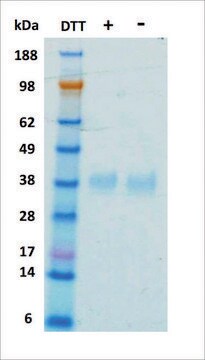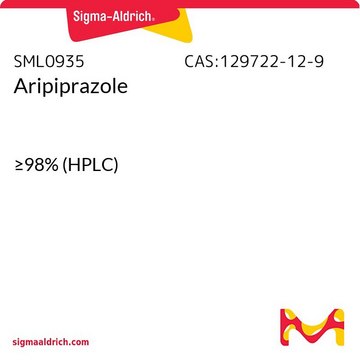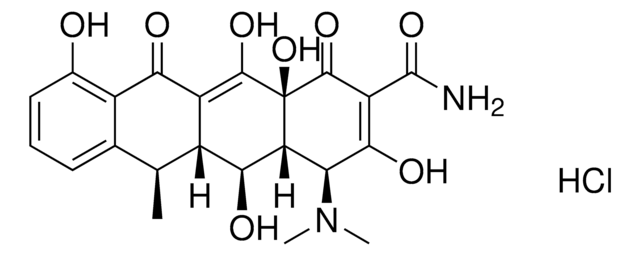E5546
Erythropoietin (EPO) human
recombinant, expressed in HEK 293 cells, suitable for cell culture
Sinónimos:
EPO, epoetin, hematopoietin, hemopoietin
About This Item
Productos recomendados
recombinante
expressed in HEK 293 cells
Ensayo
≥98% (SDS-PAGE)
Formulario
lyophilized powder
potencia
≤2.5 ng/mL ED50 (measured in a cell proliferation assay using TF-1 human cells)
técnicas
cell culture | mammalian: suitable
impurezas
Endotoxin, tested
temp. de almacenamiento
−20°C
Descripción general
Acciones bioquímicas o fisiológicas
EPO consists of 165 amino acids and has a high carbohydrate content, of both N-linked and O-linked types. The oligosaccharide chains are responsible for EPO production, secretion, longevity, and functioning. The biological activity of EPO depends upon two disulfide bonds, one formed between cysteine7 and cysteine160, and the other between cysteine29 and cysteine33. Thus, EPO proper folding, glycosylation and disulfide bonds formation are crucial for its function.
EPO was found to downregulate HIF-1α in the diabetic rat model. EPO helped maintaining the homeostasis of intracellular zinc in retinal cells, altered as a result of diabetes, by restoring Zinc transporter 8 (ZnT8) expression.
Código de clase de almacenamiento
11 - Combustible Solids
Clase de riesgo para el agua (WGK)
WGK 2
Punto de inflamabilidad (°F)
Not applicable
Punto de inflamabilidad (°C)
Not applicable
Elija entre una de las versiones más recientes:
Certificados de análisis (COA)
¿No ve la versión correcta?
Si necesita una versión concreta, puede buscar un certificado específico por el número de lote.
¿Ya tiene este producto?
Encuentre la documentación para los productos que ha comprado recientemente en la Biblioteca de documentos.
Los clientes también vieron
Nuestro equipo de científicos tiene experiencia en todas las áreas de investigación: Ciencias de la vida, Ciencia de los materiales, Síntesis química, Cromatografía, Analítica y muchas otras.
Póngase en contacto con el Servicio técnico












